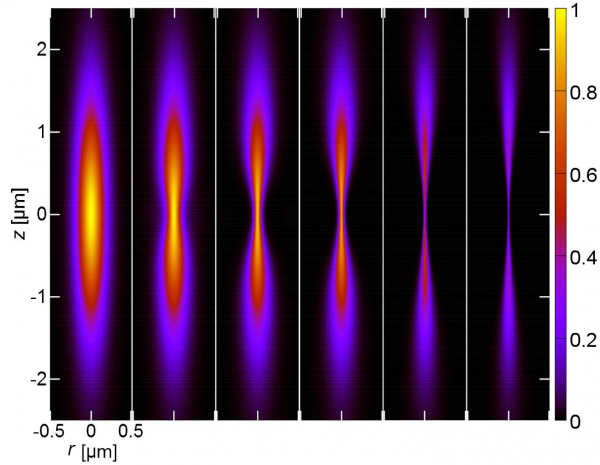Quantitative fluorescence correlation spectroscopy in three-dimensional systems under stimulated emission depletion conditions
Optica 2017 |Vol. 4 | No. 8, Aug
Krzysztof Sozanski, Evangelos Sisamakis, Xuzhu Zhang and Robert Holyst
Abstract:
Superresolution fluorescence microscopy is becoming a widely available, standard tool in biophysical research. The leading deterministic approach, stimulated emission depletion (STED), can enhance the capabilities of various fluorescence techniques, including fluorescence correlation spectroscopy (FCS). Until now, STED-FCS has been successfully applied to diffusion studies in 2D systems such as membranes. Severe deficiencies, including overestimation of the detected number of probes as well as underestimation of their diffusion coefficients (both parameters differing from the expected values by up to an order of magnitude) impeded STED-FCS studies in solutions. Here, we introduce a realistic 3D model of the detection volume for STED-FCS and use it to resolve the apparent inconsistencies. To validate the model, we show a range of STED-FCS experimental data on free diffusion of probes in solutions, covering a broad range of diffusion coefficients and STED power levels. We define the limitations of STED-FCS in 3D and provide simple guidelines for experiment design and data analysis. The proposed approach should prove useful for particle mobility and reaction kinetics studies in polymer solutions as well as in bulk biomimetic and biological systems, especially when reactant concentrations exceeding 100 nM are required.



